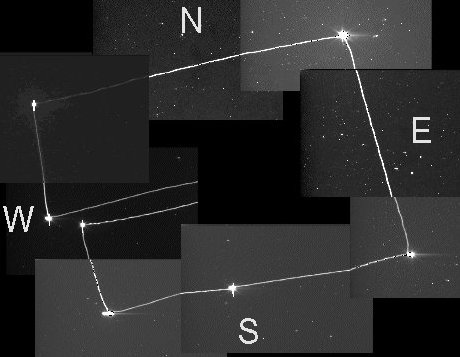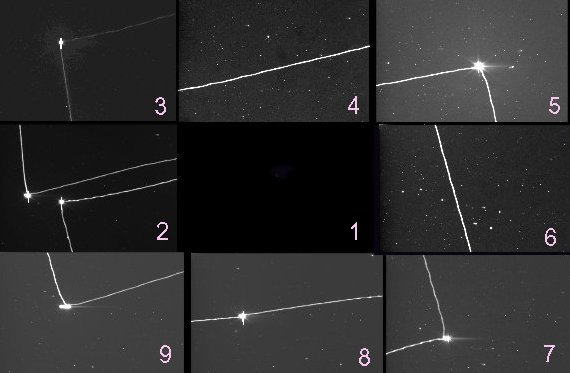
It is quite frustrating after using a flip mirror and /or par focal eyepiece to center your telescope, only to find your CCD camera is Lost in Space. The method described here, will increase the Field of View of your CCD camera nine fold, while decreasing the time to find a missing object possibly tenfold. Most bright objects can be found within one minute's time, provided that your object is relatively on target. The trick is to use your stationary CCD camera as a moveable video camera. This is accomplished by slewing the telescope while the camera is imaging. A good computer program such as The Sky will help command the telescope, although it may be possible to use the telescope's keypad as well.

The image above is a screen shot from The Sky IV. The
star Arcturus is centered. A green FOV line outlines the area the CCD camera
will image. In this case it is a Pictor 416 @ F/3.3. After setting
the time exposure for 60 seconds, and beginning to take an image with the
camera, the slewing process begins. First a slew West to point B, immediately
a slew north to C, another to D and then E. It is necessary to stop
at F before preceding to G, else the north & south images will be similar.
After G, we return to B then back to start at A, or in this case
where Arcturus should have been. The image below represents the path that
was taken.

At this point 60 seconds should have expired, and hopefully
your desired object will match one of the below images. If this process
takes longer than 60 seconds, it will be necessary to increase the exposure
time accordingly. If it matches image 1, your object is beyond this
enlarged FOV. Image 2 will represent that your object was to the West,
3 in the NW, and so forth. As seen in image 8, by previously stopping
in the south, a star image appears in the line. This is in contrast to
image 4, where the is only a line. Thus indicating that the object will
be in the north. This method works fine for bright stars and planets,
not for faint objects. This method can be modified beyond this first
FOV to an even wider one, but at that point it may be time to attempt to
manually re-center.

Paul Gitto 10/20/1998
Take me back to
Sitemap
What's
New
Table of
Contents